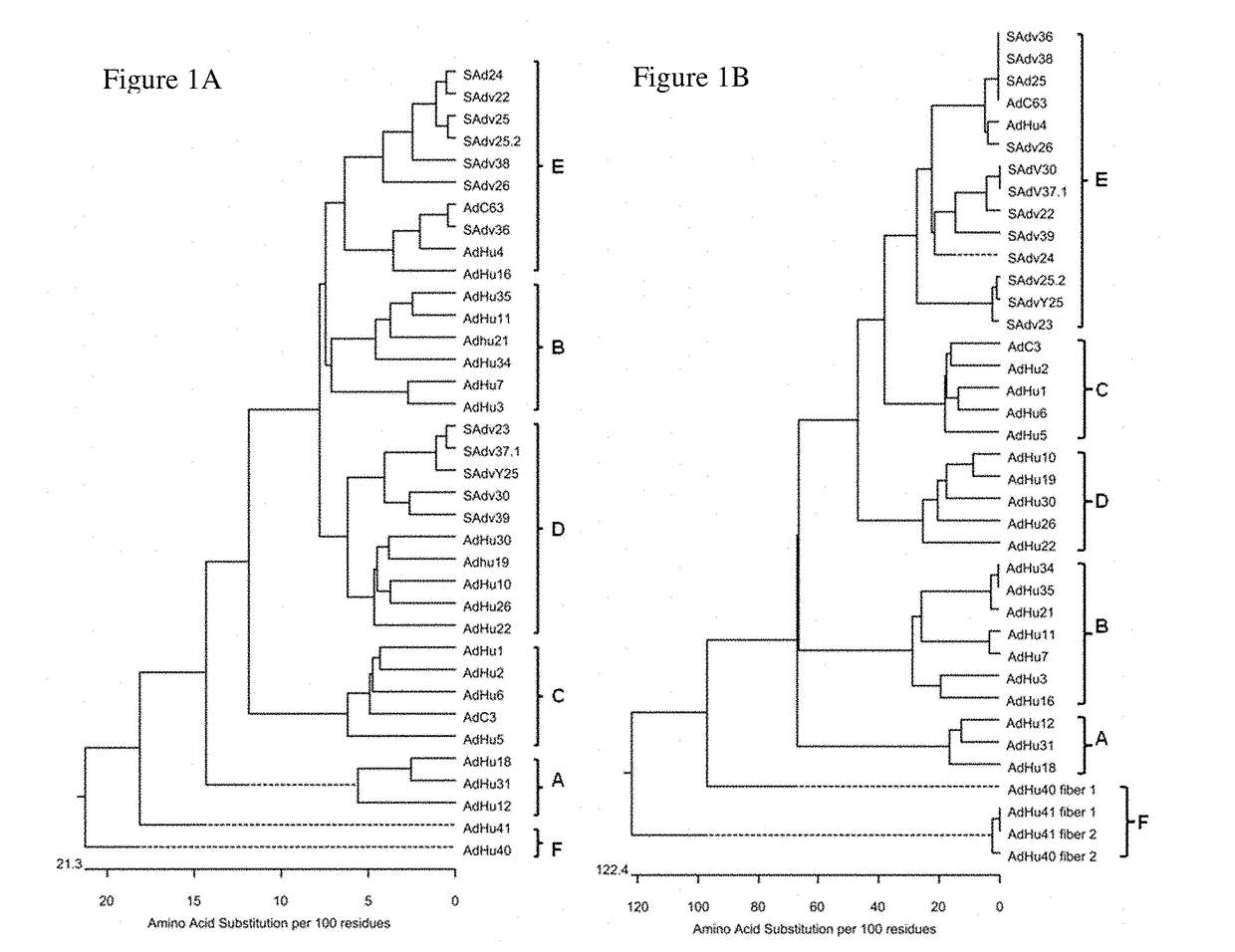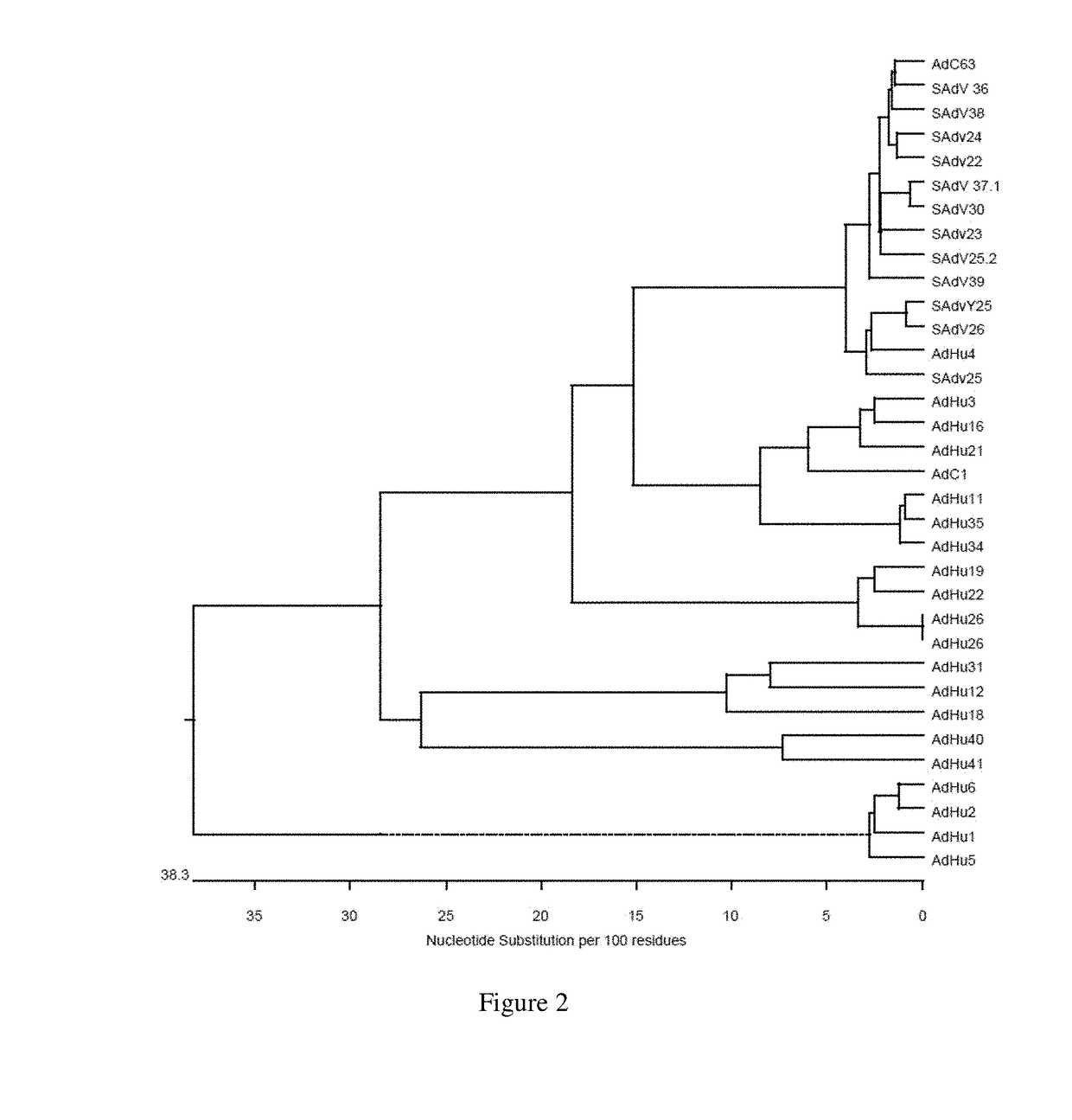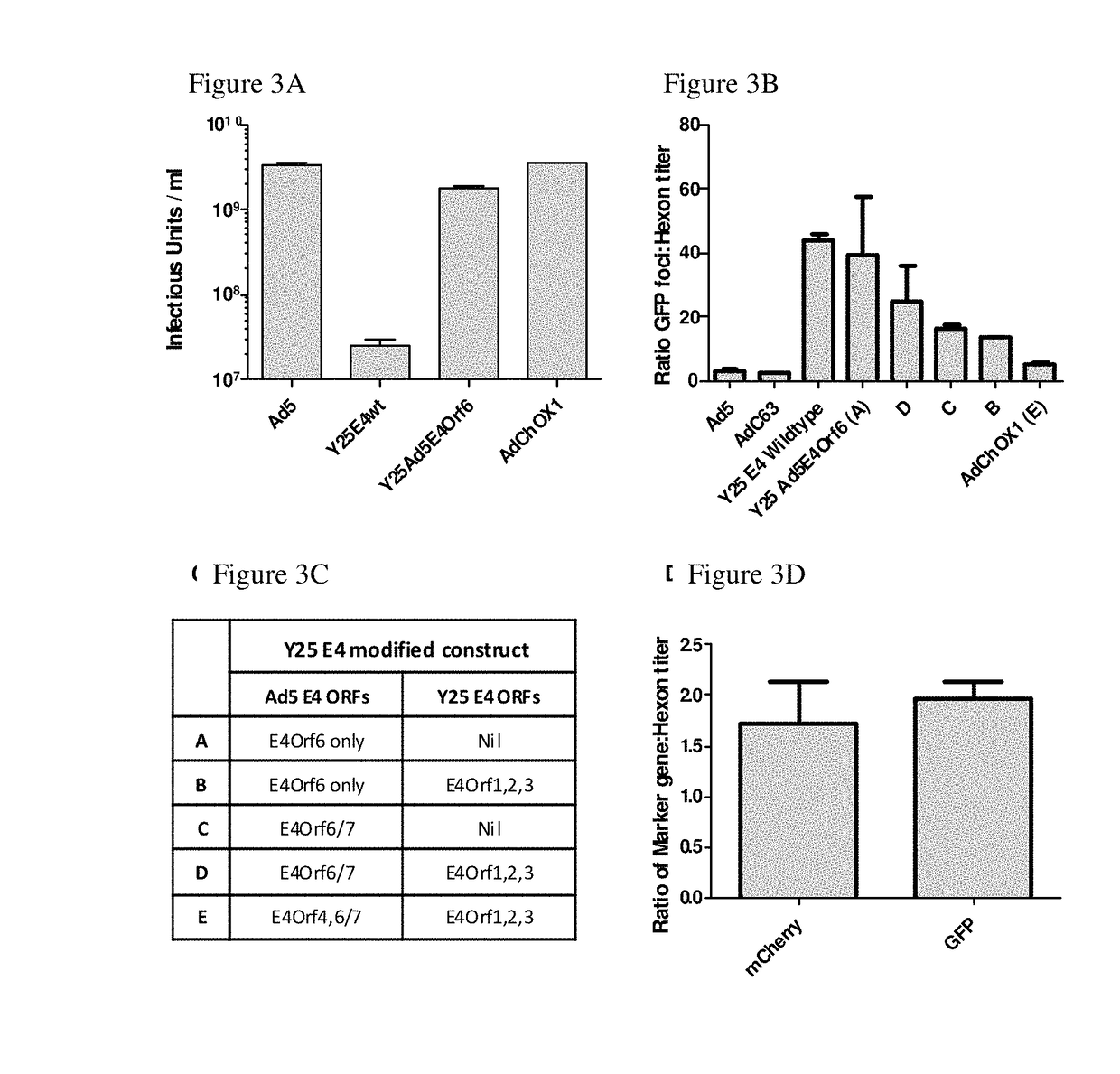Simian adenovirus and hybrid adenoviral vectors
a technology of hybrid adenovirus and adenovirus, which is applied in the field of new adenoviruses, can solve the problems of poor clinical trial efficacy of first generation of vaccine vectors based on archetypal human adenovirus adhu5, impractical approach, etc., and achieve the effect of minimizing the
- Summary
- Abstract
- Description
- Claims
- Application Information
AI Technical Summary
Benefits of technology
Problems solved by technology
Method used
Image
Examples
example 1
[0237]Generation of a molecular clone of AdY25 in a Bacterial Artificial Chromosome Wild type chimpanzee adenovirus AdY25 was obtained from Goran Wadell of Umea University, Sweden. The virus was propagated to high titer in HEK293 cells and the viral DNA phenol extracted and sequenced. The nucleotide sequence of the wild type AdY25 virus is found in SEQ ID NO. 1. Based on the sequencing data, a BAC ‘rescue vector’ was constructed containing regions of homology to the left and right flanks of the viral genome (homology flanks were PCR amplified from viral DNA). Homologous recombination was then performed in BJ5183 E. Coli cells between viral DNA and the linearised rescue vector to incorporate the viral genome into the BAC vector.
[0238]An extra homology flank downstream of the adenovirus E1 region was included to enable simultaneous deletion of E1 in order to render the new vector immediately replication incompetent.
[0239]Phage lambda site specific recombination sites attR1 and attR2 w...
example 2
of the Adenoviral E3 Region
[0241]The ΔE1 Ad-BAC vector genome produced in accordance with Example 1 was further modified using GalK recombineering to delete the adenoviral E3 region and thus increase the insert capacity of the new vector by approximately 5 kb.
[0242]The E3 region was deleted by recombination between the vector genome and a PCR amplified GalK cassette, flanked by 50 bp regions of homology either side of the E3 gene. Recombination was performed in SW102 E. coli cells, which have been specifically engineered to lack the GalK gene which is required for the utilisation of galactose as the sole carbon source. Recombinant cells were selected using minimal media containing only galactose, in which only recombinants containing the GalK gene in place of the E3 locus were able to grow 6.
example 3
ion of the E4 Region and Effects Thereof
i). Modification of E4 Region
[0243]The E4 locus of the ΔE1 ΔE3 Ad-BAC vector genome produced in accordance with Example 2 was then modified. The E4 region was deleted by recombination in SW102 E. Coli cells between the vector genome and a PCR-amplified GalK cassette, flanked by 50 bp regions of homology either side of the E4 gene. Recombinant cells were selected using mimimal media containing only galactose. The GalK gene was then replaced with the required E4 open reading frames from AdHu5 and AdY25 in a similar manner to provide the 5 constructs listed in FIG. 3C. Recombinant cells comprising the gene in place of the GalK gene were then selected using media comprising 2-deoxygalactose (DOG)6.
ii). Effect of E4 Modification on Viral Yield
[0244]HEK293 cells were infected with the following viral vectors at a multiplicity of infention of 9 and incubated at 37° C. for 48 hours before harvesting:[0245]i. AdHu5 (“Ad5”)[0246]ii. AdY25 E4 wildtype (“...
PUM
 Login to View More
Login to View More Abstract
Description
Claims
Application Information
 Login to View More
Login to View More - R&D
- Intellectual Property
- Life Sciences
- Materials
- Tech Scout
- Unparalleled Data Quality
- Higher Quality Content
- 60% Fewer Hallucinations
Browse by: Latest US Patents, China's latest patents, Technical Efficacy Thesaurus, Application Domain, Technology Topic, Popular Technical Reports.
© 2025 PatSnap. All rights reserved.Legal|Privacy policy|Modern Slavery Act Transparency Statement|Sitemap|About US| Contact US: help@patsnap.com



